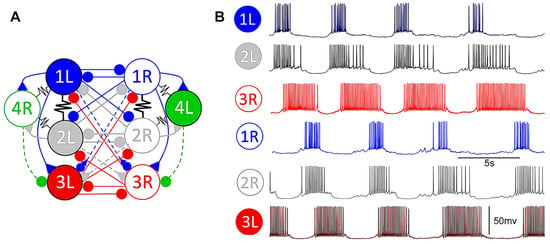QRS fragmentation has not been linked with increased mortality in individuals without known cardiac disease. We aimed to investigate the physiological determinants of QRS fragmentation in individuals without cardiac disease.
Methods: Study participants were 163 (54 athletes, 109 nonathletes) asymptomatic individuals with QRS
[...] Read more.
QRS fragmentation has not been linked with increased mortality in individuals without known cardiac disease. We aimed to investigate the physiological determinants of QRS fragmentation in individuals without cardiac disease.
Methods: Study participants were 163 (54 athletes, 109 nonathletes) asymptomatic individuals with QRS fragmentation but without cardiac disease. QRS fragmentation was assessed in the supine position after deep inspiration or standing up and during exercise. The changes in QRS fragmentation were evaluated over a median follow-up period of 2.3 (0.8–4.9) years.
Results: The most common lead with QRS fragmentation was III (63.0% in athletes, 61.5% in nonathletes), immediately followed by V1 (50.0%) and aVF (42.6%) in athletes and aVF (55.0%) in nonathletes. QRS fragmentation in V1 was more frequent in athletes compared to nonathletes (
p < 0.001). Among athletes, the presence of QRS fragmentation in V1 could be independently predicted by increased RVOTproxi (right ventricular outflow tract proximal diameter indexed to body surface area) (
p < 0.001). Among individuals with QRS fragmentation in V1, deep inspiration resulted in disappearance of QRS fragmentation more frequently in nonathletes compared to athletes (100% vs. 20%,
p = 0.003). Deep inspiration resulted in disappearance of QRS fragmentation in aVF (
p < 0.001). The presence of QRS fragmentation in II or aVF was associated with increased body mass index (BMI) (
p = 0.003). Among athletes without QRS fragmentation in V1 at baseline, the appearance of QRS fragmentation in V1 at the end of follow-up was associated with greater training age (
p = 0.034). Among individuals with QRS fragmentation in aVF at baseline, the disappearance of QRS fragmentation in aVF at the end of follow-up was associated with greater reduction in BMI (
p = 0.008).
Conclusions: The characteristic feature of QRS fragmentation in athletes was the presence of QRS fragmentation in V1, which was associated with RVOTproxi. The persistence of QRS fragmentation in V1 after deep inspiration could serve as a specific marker of exercise-training-related cardiac adaptation. The presence of QRS fragmentation in the leads of the frontal plane was influenced by BMI and respiration phase.
Full article
 IJMS
IMPACT
IJMS
IMPACT Applied Sciences
IMPACT
Applied Sciences
IMPACT Sustainability
IMPACT
Sustainability
IMPACT Sensors
IMPACT
Sensors
IMPACT JCM
IMPACT
JCM
IMPACT Materials
IMPACT
Materials
IMPACT Molecules
IMPACT
Molecules
IMPACT Energies
IMPACT
Energies
IMPACT Electronics
IMPACT
Electronics
IMPACT Remote Sensing
IMPACT
Remote Sensing
IMPACT Cancers
IMPACT
Cancers
IMPACT Nutrients
IMPACT
Nutrients
IMPACT Mathematics
IMPACT
Mathematics
IMPACT Foods
IMPACT
Foods
IMPACT Buildings
IMPACT
Buildings
IMPACT Polymers
IMPACT
Polymers
IMPACT Animals
IMPACT
Animals
IMPACT Water
IMPACT
Water
IMPACT Plants
IMPACT
Plants
IMPACT Agronomy
IMPACT
Agronomy
IMPACT Biomedicines
IMPACT
Biomedicines
IMPACT Processes
IMPACT
Processes
IMPACT Microorganisms
IMPACT
Microorganisms
IMPACT Diagnostics
IMPACT
Diagnostics
IMPACT Nanomaterials
IMPACT
Nanomaterials
IMPACT Viruses
IMPACT
Viruses
IMPACT Medicina
IMPACT
Medicina
IMPACT Healthcare
IMPACT
Healthcare
IMPACT Cells
IMPACT
Cells
IMPACT Forests
IMPACT
Forests
IMPACT Agriculture
IMPACT
Agriculture
IMPACT Land
IMPACT
Land
IMPACT JMSE
IMPACT
JMSE
IMPACT IJERPH
IJERPH
 Symmetry
IMPACT
Symmetry
IMPACT Genes
IMPACT
Genes
IMPACT Pharmaceutics
IMPACT
Pharmaceutics
IMPACT Coatings
IMPACT
Coatings
IMPACT Micromachines
IMPACT
Micromachines
IMPACT Pharmaceuticals
IMPACT
Pharmaceuticals
IMPACT Atmosphere
IMPACT
Atmosphere
IMPACT Children
IMPACT
Children
IMPACT Religions
IMPACT
Religions
IMPACT Antioxidants
IMPACT
Antioxidants
IMPACT Life
IMPACT
Life
IMPACT Metals
IMPACT
Metals
IMPACT Biomolecules
IMPACT
Biomolecules
IMPACT Vaccines
IMPACT
Vaccines
IMPACT Education Sciences
IMPACT
Education Sciences
IMPACT Minerals
IMPACT
Minerals
IMPACT Horticulturae
IMPACT
Horticulturae
IMPACT Brain Sciences
IMPACT
Brain Sciences
IMPACT JPM
IMPACT
JPM
IMPACT Bioengineering
IMPACT
Bioengineering
IMPACT












